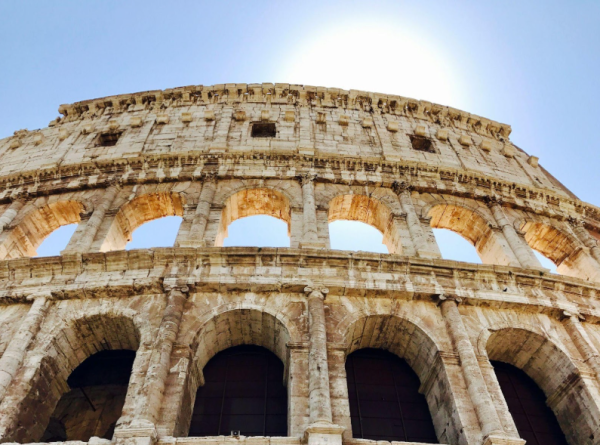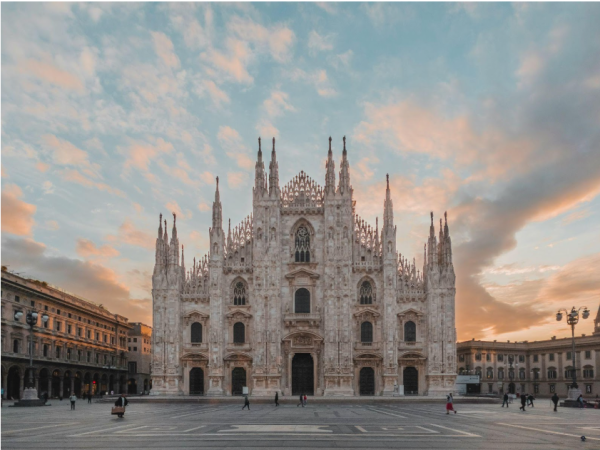Italy, a country renowned for its rich tapestry of history, art, and architecture, offers an unparalleled journey through time. From the grandiose ruins of the Roman Empire to the refined elegance of Renaissance palaces, exploring Italy’s landmark buildings is a voyage into the heart of Western civilization. Whether you’re embarking on Italy tours for the first time or are a seasoned traveller, the architectural marvels across this beautiful nation promise to captivate and inspire.
Rome: The Eternal City
No exploration of Italy’s landmark buildings would be complete without starting in Rome. The Colosseum, an iconic symbol of Imperial Rome, remains a must-see. This ancient amphitheatre, built nearly 2,000 years ago, once hosted gladiatorial contests and public spectacles. Nearby, the Roman Forum offers a glimpse into the social and political heart of ancient Rome. Walking through its ruins, you can almost hear the echoes of senators debating and the hustle and bustle of daily Roman life.
Another architectural gem in Rome is the Pantheon. Originally built as a temple to all the gods, the Pantheon’s impressive dome, with its central oculus, remains the world’s largest unreinforced concrete dome to this day. Its harmonious proportions and ingenious engineering have influenced countless buildings throughout history.

Naples: Gateway to the South
Taking the train from Rome to Naples, you’ll find yourself in a city with a unique charm and energy. Naples is home to the historic Castel dell’Ovo, the oldest standing fortification in the city. Overlooking the Gulf of Naples, it offers stunning views and a fascinating history that dates back to Roman times.
The Royal Palace of Naples, with its grandiose Baroque architecture, and the nearby Teatro di San Carlo, one of the oldest opera houses in the world, reflect the city’s rich cultural heritage. Additionally, the ancient ruins of Pompeii, just a short journey from Naples, provide a poignant and well-preserved glimpse into daily life in a Roman city frozen in time by the eruption of Mount Vesuvius in AD 79.
Florence: The Cradle of the Renaissance
A short train ride from Rome will take you to Florence, the cradle of the Renaissance. Here, the stunning Florence Cathedral, with its iconic red-tiled dome designed by Brunelleschi, dominates the skyline. Climbing to the top of the dome provides a panoramic view of the city and a close-up look at this architectural masterpiece.
Florence is also home to the Palazzo Vecchio, a fortress-like palace that has served as the city’s town hall since the 14th century. The building’s austere exterior contrasts with its richly decorated interior, filled with frescoes by Vasari and other Renaissance masters. The Uffizi Gallery, housed in a former administrative office, is another must-visit. Its extensive collection of Renaissance art, including works by Botticelli, Michelangelo, and Leonardo da Vinci, is unparalleled.
Venice: The Floating City
Venturing north, Venice offers a unique architectural experience. The city, built on a network of canals, boasts remarkable buildings that seem to float on water. St. Mark’s Basilica, with its opulent mosaics and gilded domes, reflects the city’s Byzantine influences. The Doge’s Palace, once the residence of the Venetian rulers, showcases Gothic architecture at its finest. Its ornate façade and grand interior rooms, including the impressive Sala del Maggior Consiglio, highlight Venice’s historical significance as a maritime power.
Milan: Fashion and Futurism
Milan, Italy’s fashion and financial hub, also boasts significant architectural landmarks. The Milan Cathedral, or Duomo, is a striking example of Gothic architecture. Its intricate façade, adorned with countless statues and spires, is matched only by the breathtaking views from its rooftop.

In stark contrast to the historical architecture, Milan is also home to modern masterpieces. The Pirelli Tower, a pioneering example of post-war Italian modernism, and the Bosco Verticale, an innovative residential building that integrates greenery into its design, illustrate Milan’s blend of tradition and futurism.
Sicily: Island of Wonders
Finally, Sicily, the largest island in the Mediterranean, boasts a diverse architectural heritage influenced by Greek, Roman, Norman, and Arab cultures. The Valley of the Temples in Agrigento features some of the best-preserved ancient Greek temples outside of Greece. The Norman Palace in Palermo, with its stunning Palatine Chapel, showcases a unique blend of Byzantine, Norman, and Arab art and architecture.
Conclusion
Italy’s architectural landmarks are a testament to its long and varied history, reflecting the many cultures and epochs that have shaped this extraordinary country. From the ancient ruins of Rome to the modern marvels of Milan, each building tells a story and offers a unique window into the past.
Exploring these landmarks, whether by foot, car, or the efficient train network that connects cities such as Rome and Naples, enriches any traveller’s understanding and appreciation of Italy’s cultural and historical legacy. So, pack your bags, plan your visit, and prepare to be awed by the timeless beauty and architectural grandeur of this magnificent country.

